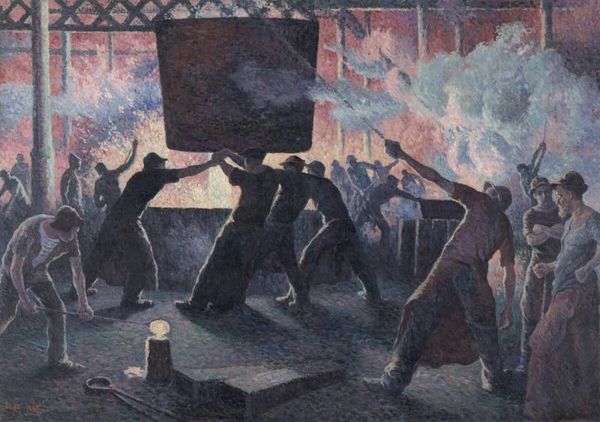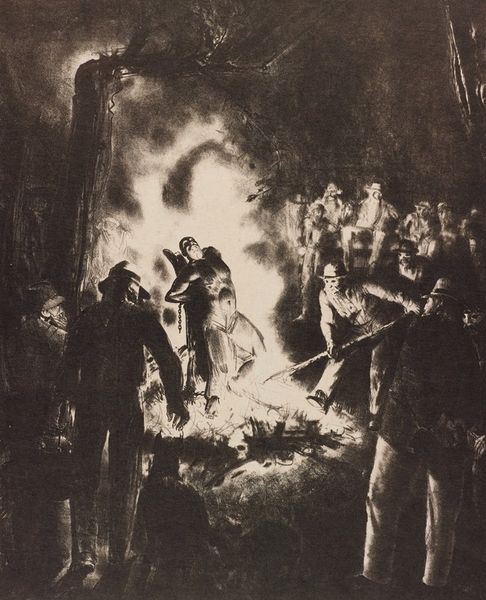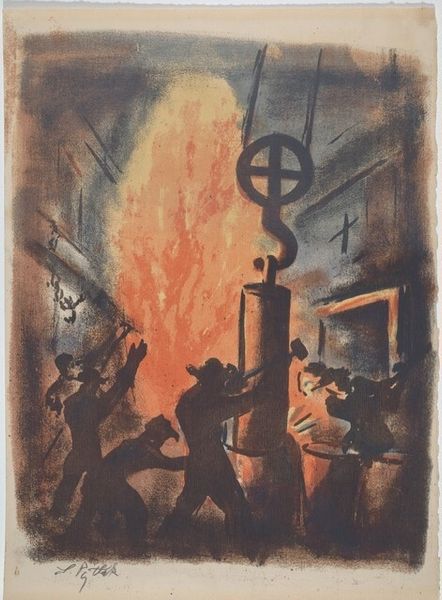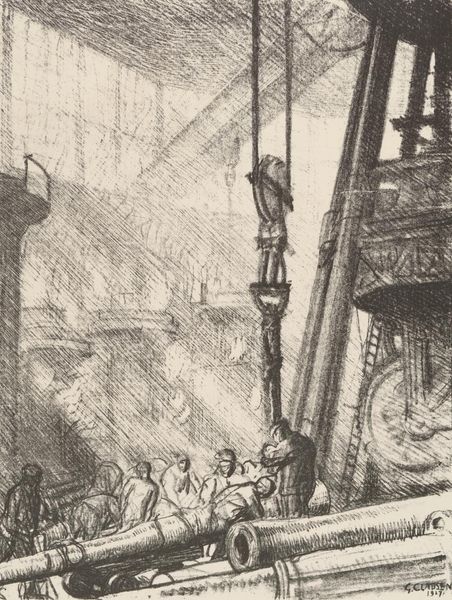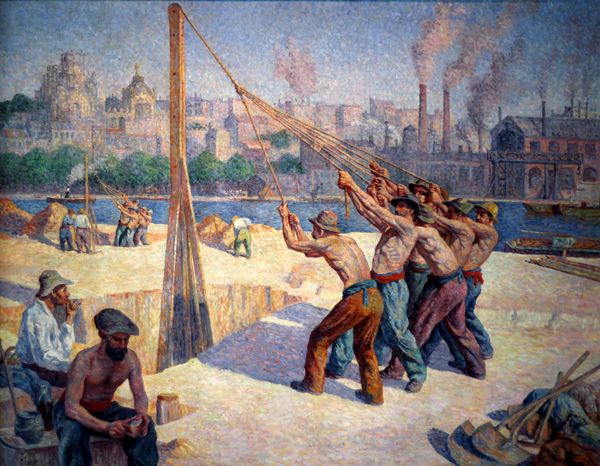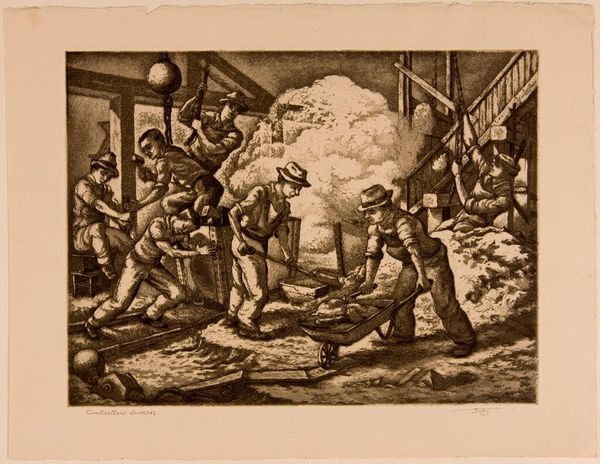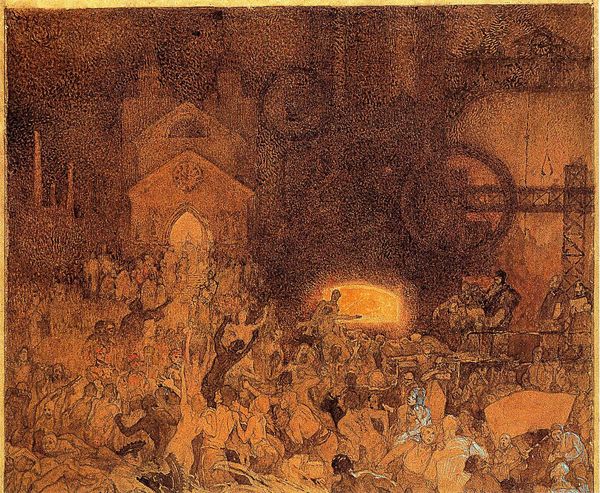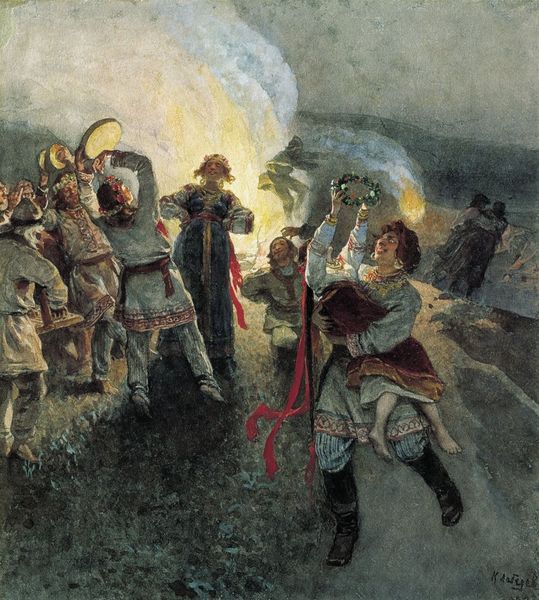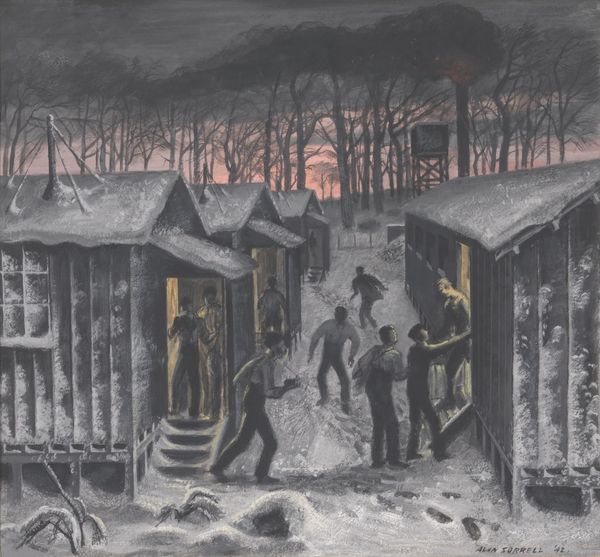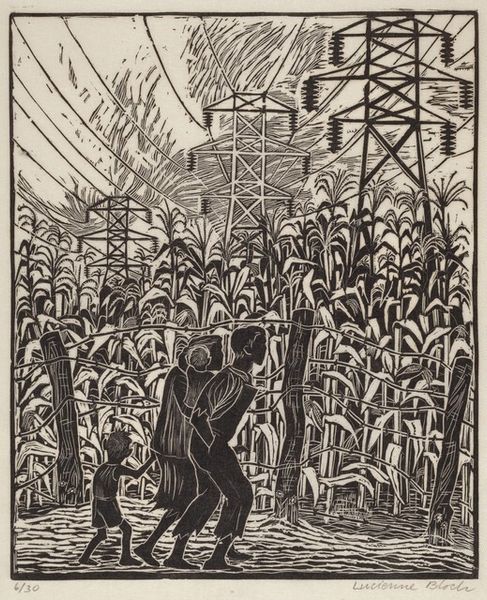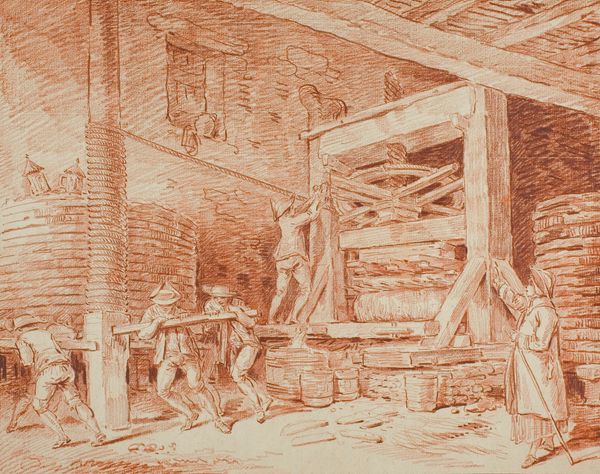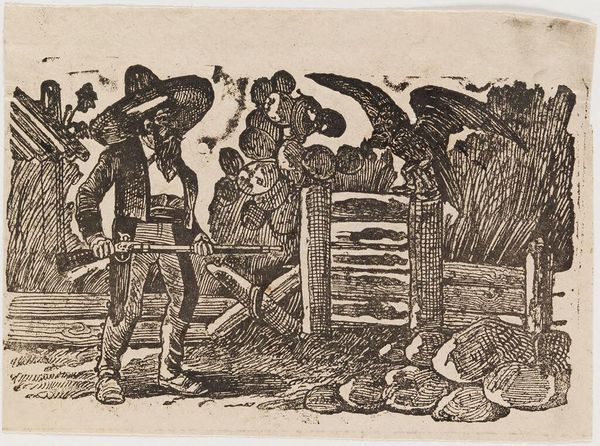
painting, oil-paint, impasto
#
painting
#
oil-paint
#
landscape
#
figuration
#
oil painting
#
impasto
#
genre-painting
#
history-painting
#
post-impressionism
Copyright: Public domain
Curator: Standing before us is Maximilien Luce's “L'Acierie,” painted in 1899. The scene pulses with industry, captured through oil paint and a noticeable impasto technique. What’s your first impression? Editor: It’s dramatic, almost theatrical. The figures are silhouetted against this overwhelming, fiery glow. It's very much about the spectacle of labour, isn't it? A scene both awe-inspiring and tinged with…danger? Curator: Indeed. Luce, associated with Post-Impressionism, was fascinated by industrial labor and its socio-political implications. Notice how the very materiality of the paint—the thick, textured strokes—mimics the raw energy of the steelworks. There's a tactile quality that invites us to consider the physical effort involved. Editor: Absolutely. This painting emerged during a period of intense industrialization and labor unrest in France. It's impossible to divorce it from the social and political anxieties of the era. The men here become almost anonymous, consumed by the fiery furnace. It raises questions about the value—or lack thereof—attributed to their lives and toil. Was this exhibited, do we know how the public reacted at the time? Curator: Records indicate it received mixed reviews initially, but it soon became recognized as a key example of Luce’s social commentary. He certainly wanted the viewer to consider how art can function as a record of these important transformations in labor and society. And the scale... Editor: The immensity! Which then dwarfs the figures and reduces them to almost incidental components. Their exertion feels simultaneously heroic and futile. I'm curious how the institution displays this painting informs interpretation...its placement says a lot. Curator: And ultimately, it highlights the very real conditions in which workers produced commodities during this period. The art provides both commentary and serves as archive in this setting. Editor: A visceral, thought-provoking piece. It pulls us into a complex dialogue around progress, labour, and human cost, doesn’t it? Curator: A poignant glimpse into a pivotal era, wouldn’t you say?
Comments
No comments
Be the first to comment and join the conversation on the ultimate creative platform.
